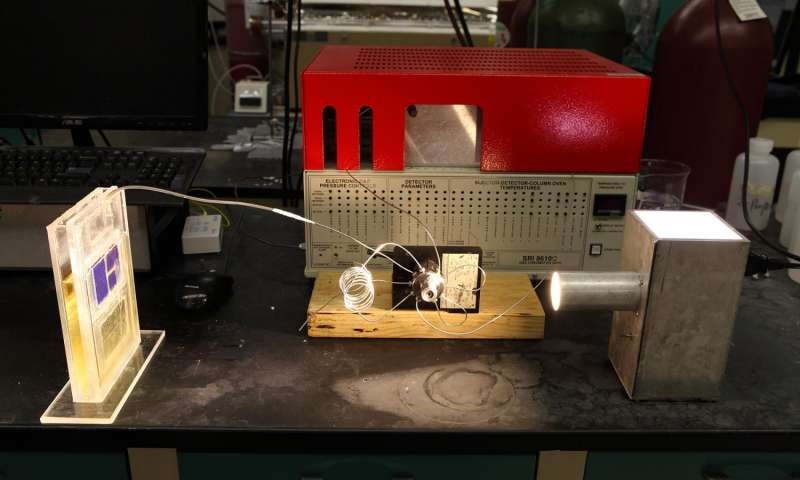
Existing solar cells may offset electrics bill, but they can’t resolve the existing carbon crisis. That could soon change; researchers from the University of Illinois at Chicago have developed a new form of photosynthetic solar cell that converts atmospheric carbon dioxide directly into usable hydrocarbon fuel, becoming completely self-sufficient.
Putting it in layman’s terms, the solar cells function as artificial leaves that absorb atmospheric carbon dioxide; but instead of releasing a byproduct of oxygen, the energy from the cells is directly converted into electricity and stored in heavy batteries. In that sense, the cells resolve two critical issues at once: pollution and energy demands. Conventional solar cells synthesize energy into electricity without having an impact on carbon dioxide levels.
“The new solar cell is not photovoltaic—it's photosynthetic,” says Amin Salehi-Khojin, assistant professor of mechanical and industrial engineering at UIC and senior author on the study. “Instead of producing energy in an unsustainable one-way route from fossil fuels to greenhouse gas, we can now reverse the process and recycle atmospheric carbon into fuel using sunlight,” he said.
Unlike plants, which generate fuel in the form of sugar, the solar cells create syngas, a synthesized mixture of hydrogen gas and carbon monoxide that may be burned directly, or converted into diesel fuel. Discovering the most efficient catalyst for converting carbon dioxide into burnable fuel may be key in reversing global warming, but scientists have explored multiple chemicals over the years to no avail. Ensuing reactions were inefficient or relied on expensive materials like silver, explains Salehi-Khojin.
For their experiments, Salehi-Khojin and his team develop catalysts from nanoflake tungsten diselenide, a chemical from a family of nano-structured compounds called transition metal dichalcogenides, or TMDCs, and paired them with ionic liquid as the electrolyte inside a two-compartment, three-electrode electrochemical cell. The results were astounding, being 1,000 times faster than noble-metal catalysts and about 20 times less expensive.
Salehi-Khojin and his team pioneered the technique of generating hydrogen by initiating a reduction reaction — a chemical reaction that converts carbon dioxide into a burnable form — with a TMDC catalyst. And in doing so, they overcame the oxidization issue that plagued other groups who attempted to create hydrogen using TMDC catalysts through other types of chemical reactions. The breakthrough, Salehi-Khojin explained, lay in mixing an ionic fluid called ethyl-methyl-imidazolium tetrafluoroborate, with water. “The combination of water and the ionic liquid makes a co-catalyst that preserves the catalyst's active sites under the harsh reduction reaction conditions.”
How does this fit into practical applications? With only 100 watts of light per square meter needed to create free oxygen and hydrogen ions at the anode—that is, the average intensity of light reaching Earth’s surface—the technology should easily be adaptable for large-scale use in solar farms, and small-scale applications. It may even prove useful in expeditions to Mars, where the atmosphere is composed primarily of carbon dioxide.
More importantly, were the ability to convert carbon dioxide into fuel be comparable in cost to a gallon of gasoline, fossil fuels could potentially be rendered obsolete. So far, Salehi-Khojin stands on the precipice of a breakthrough.
Source: Phys.org
Advertisement
Learn more about Electronic Products Magazine





